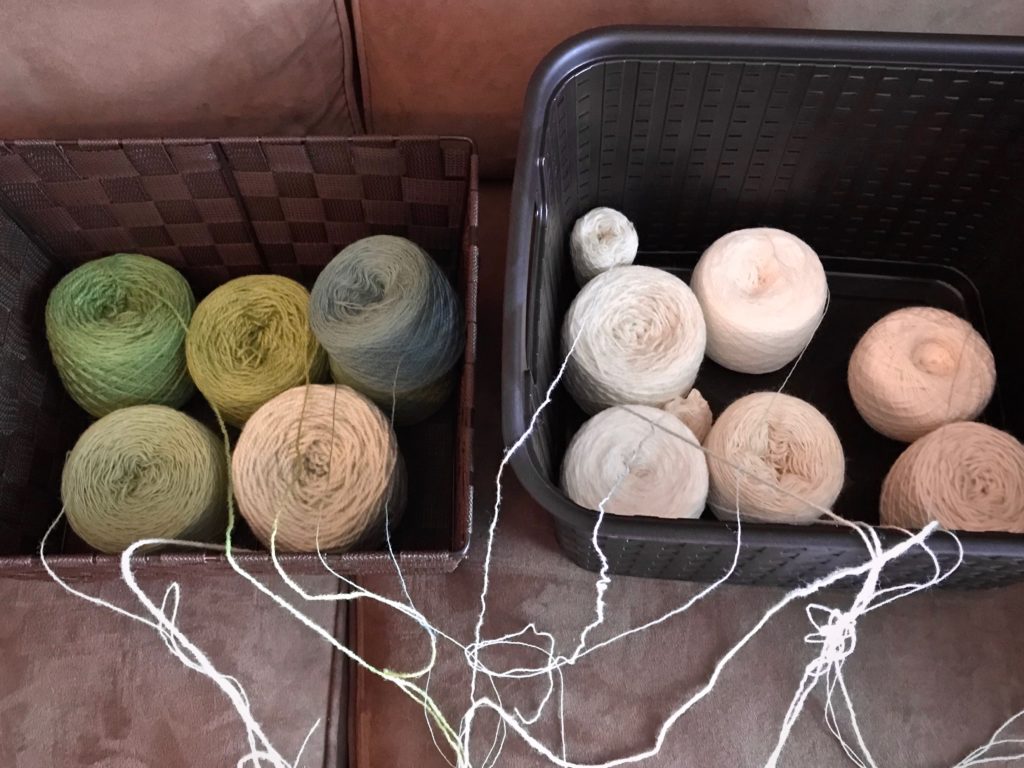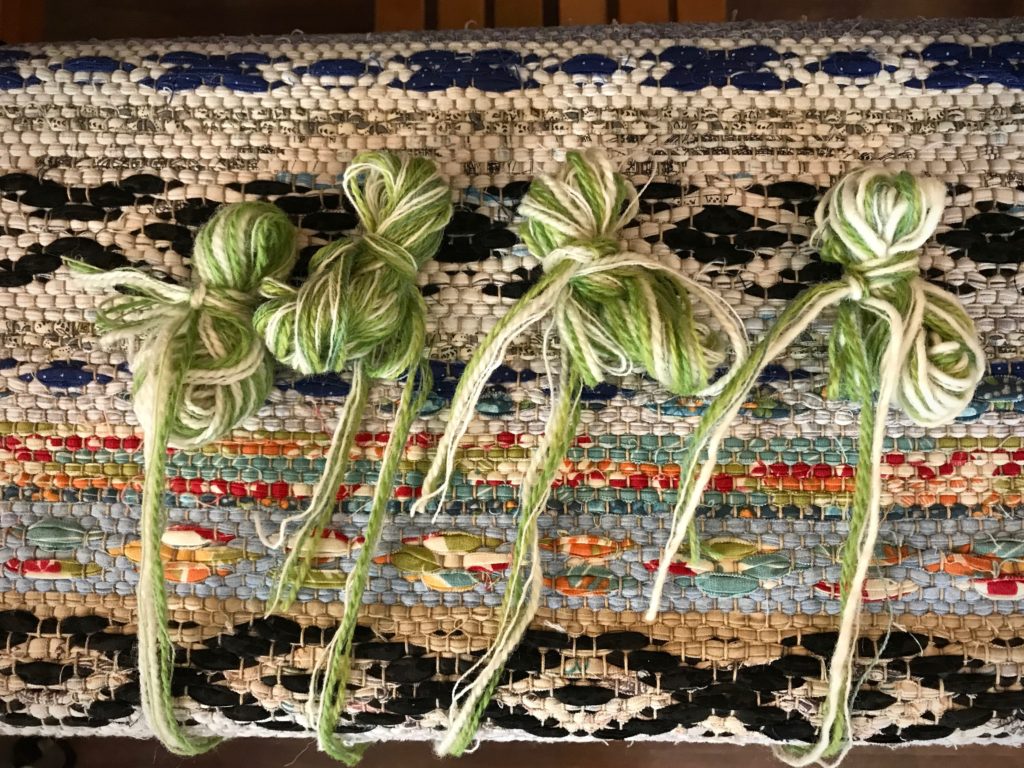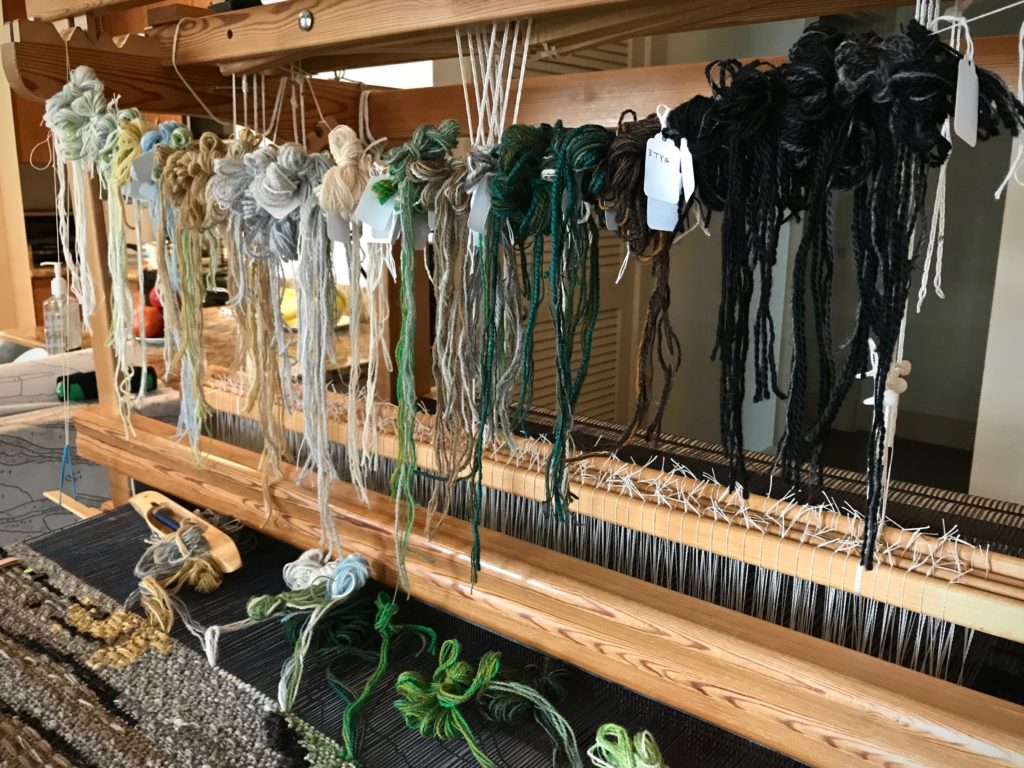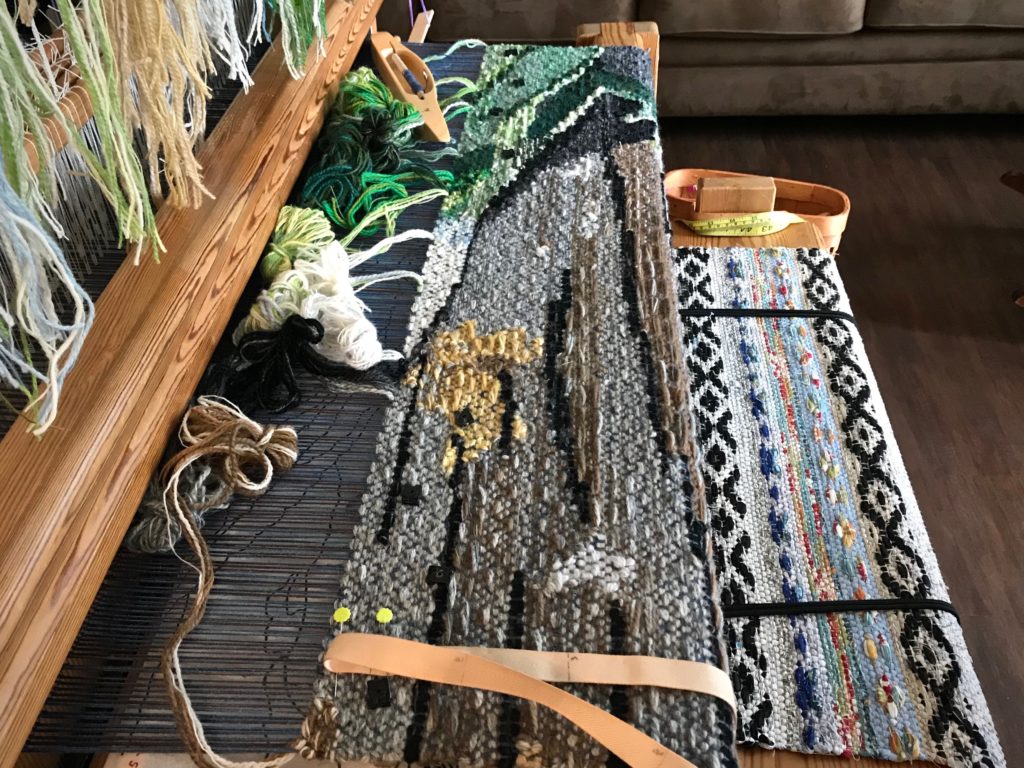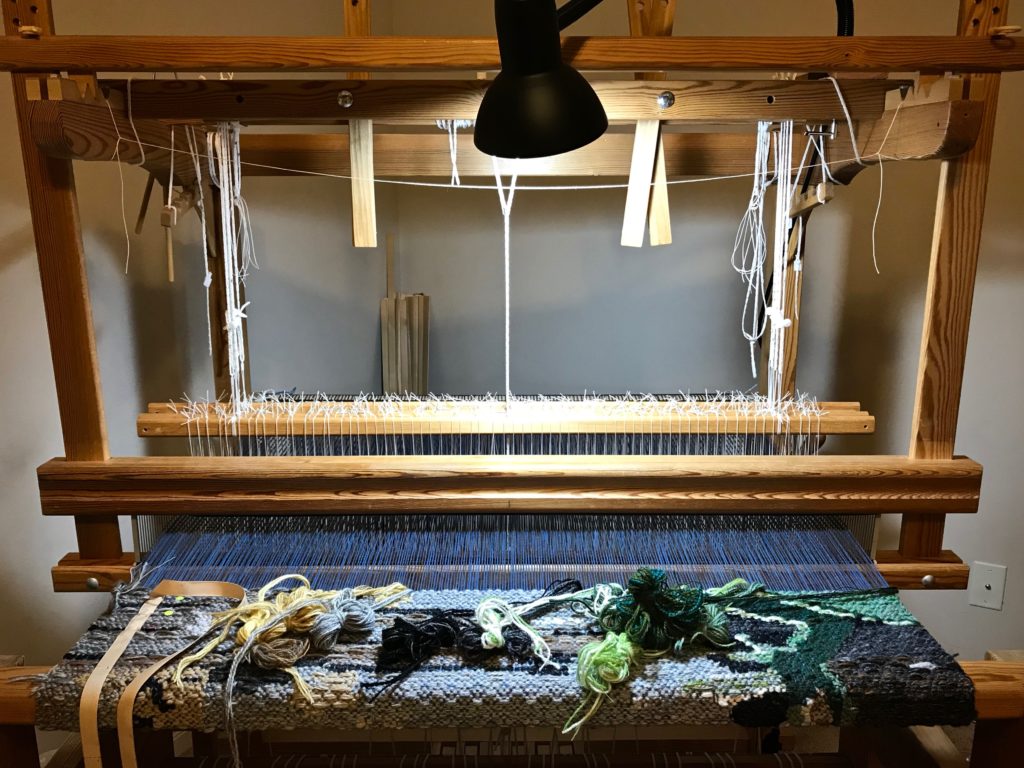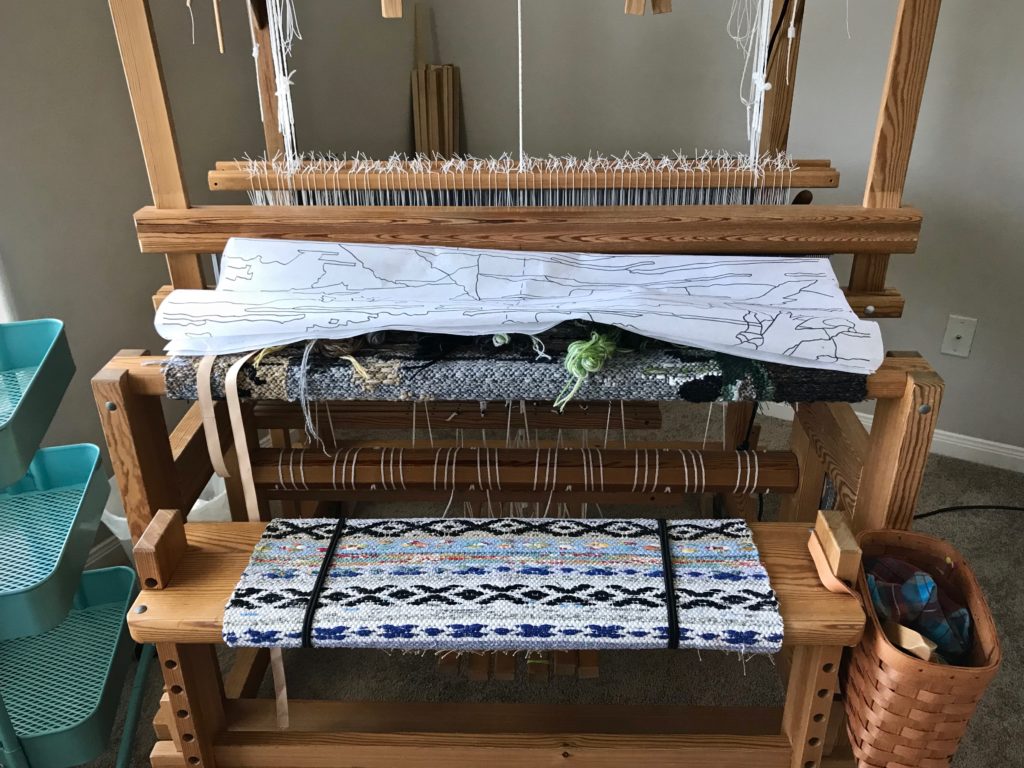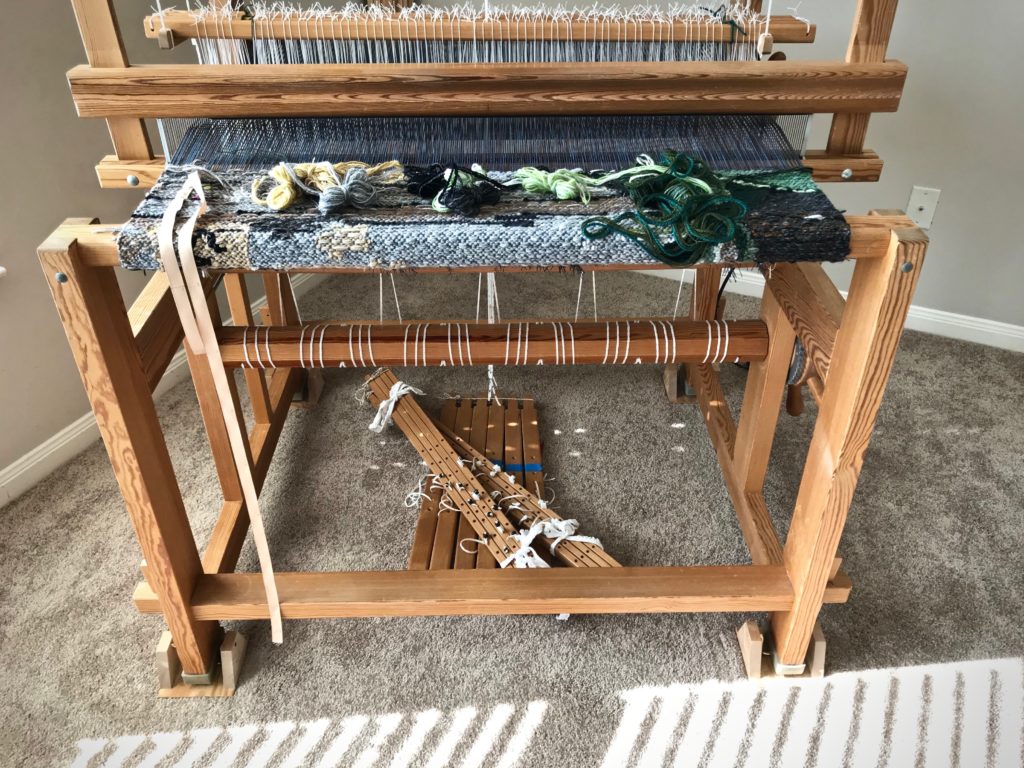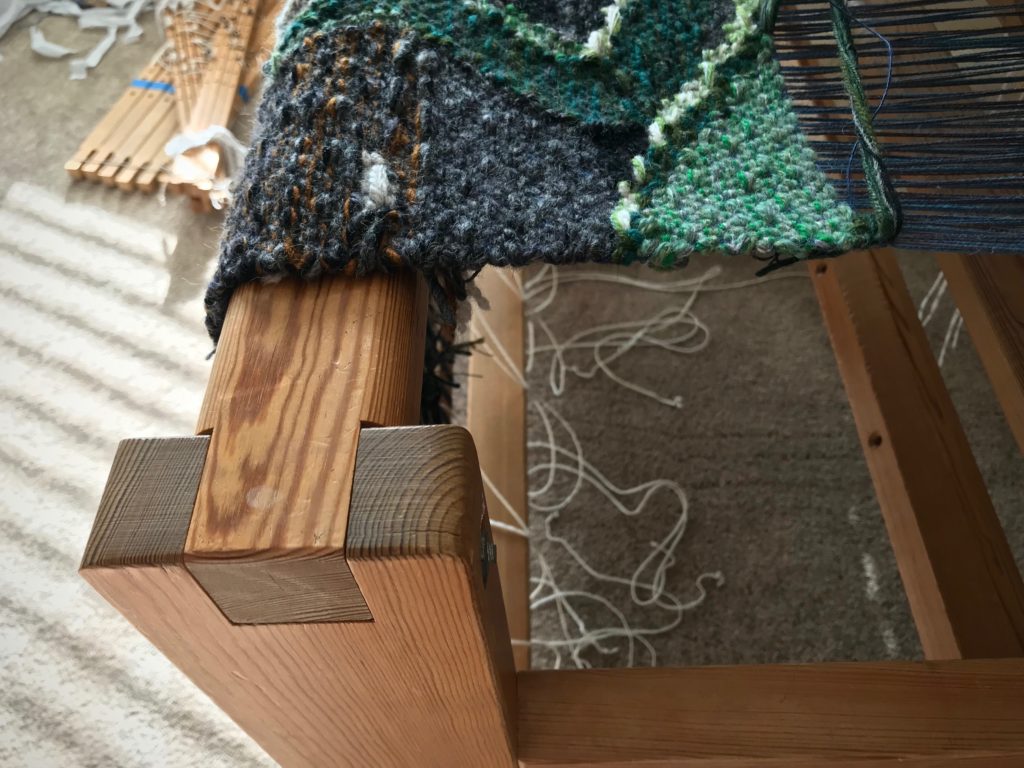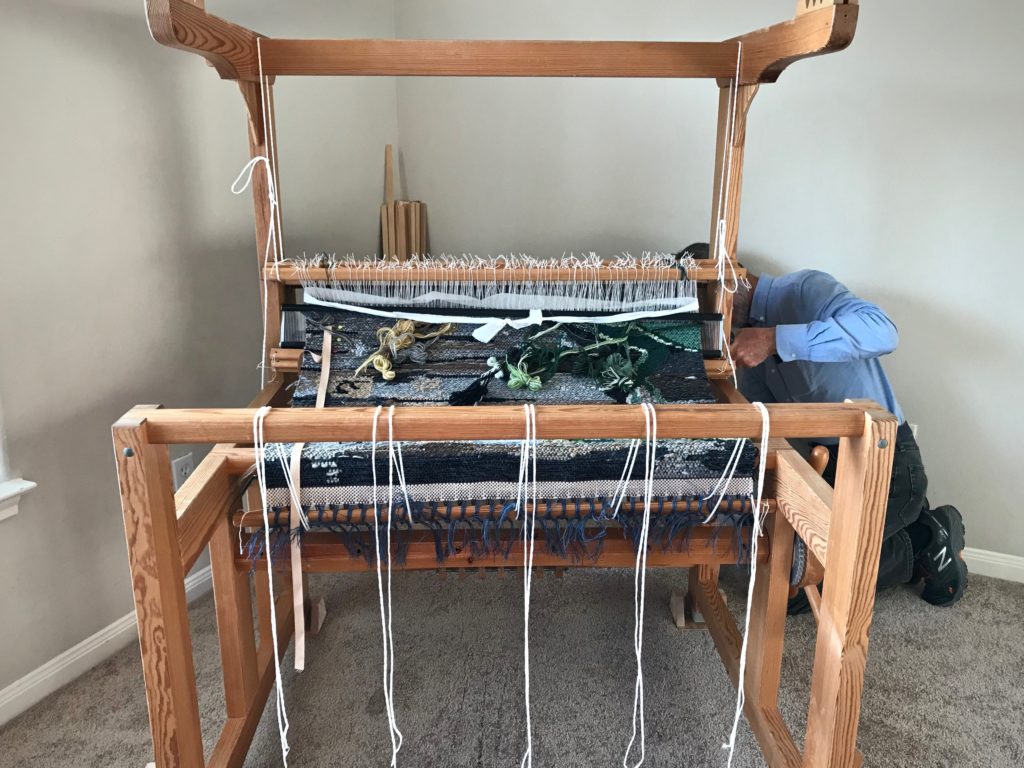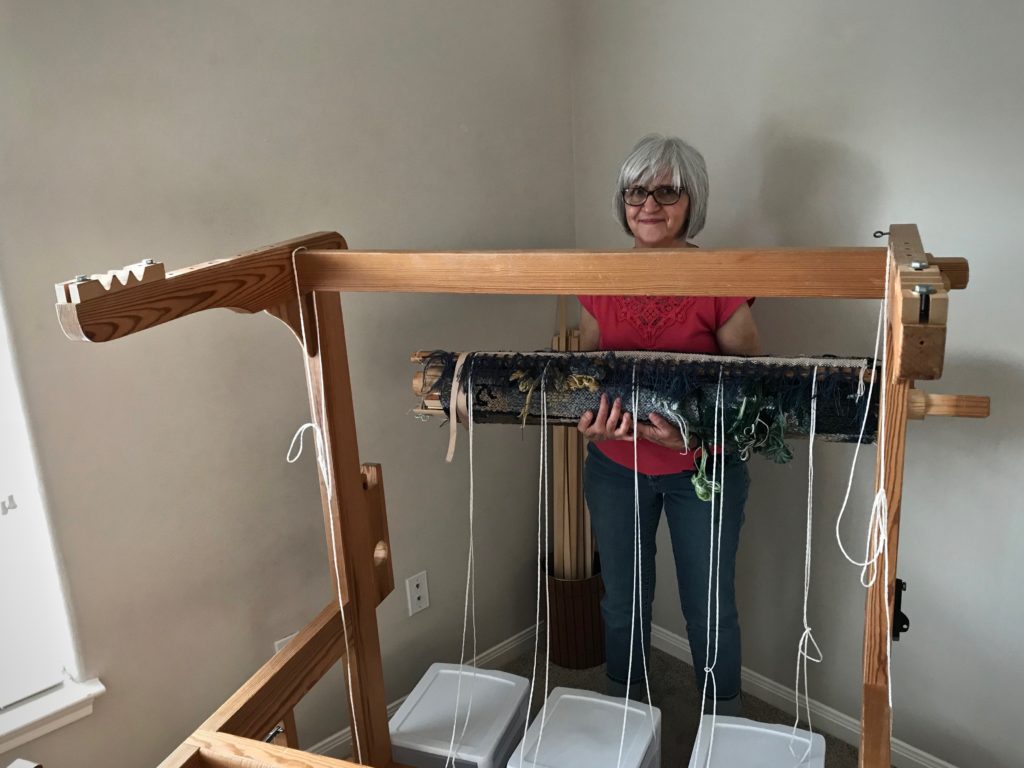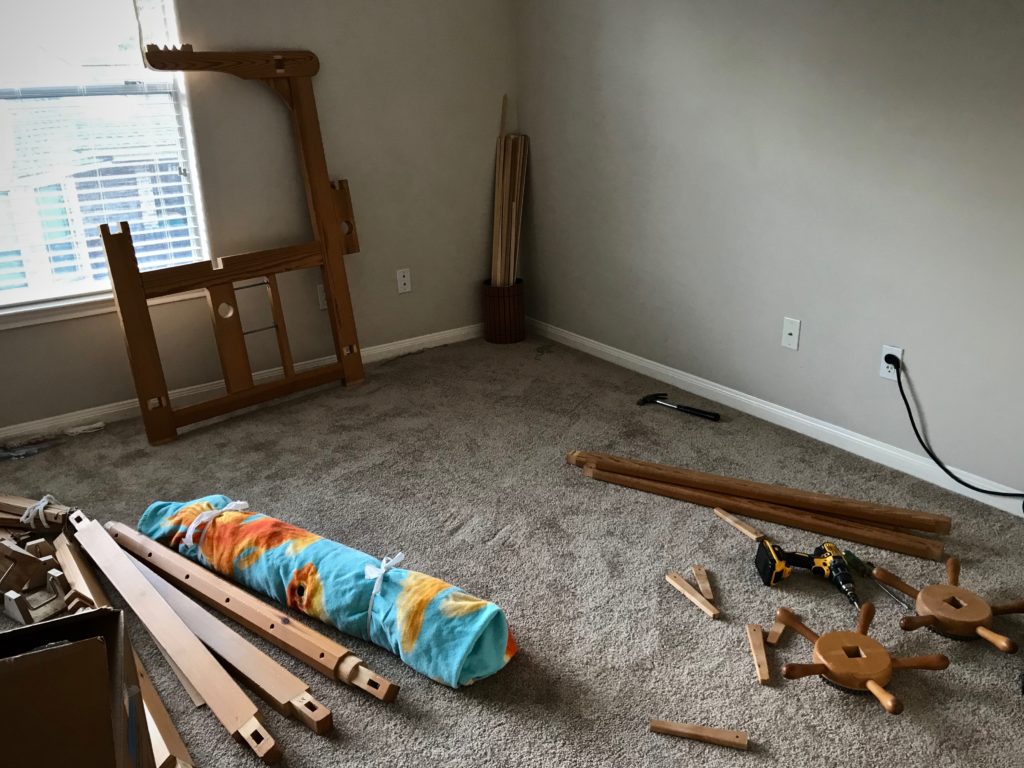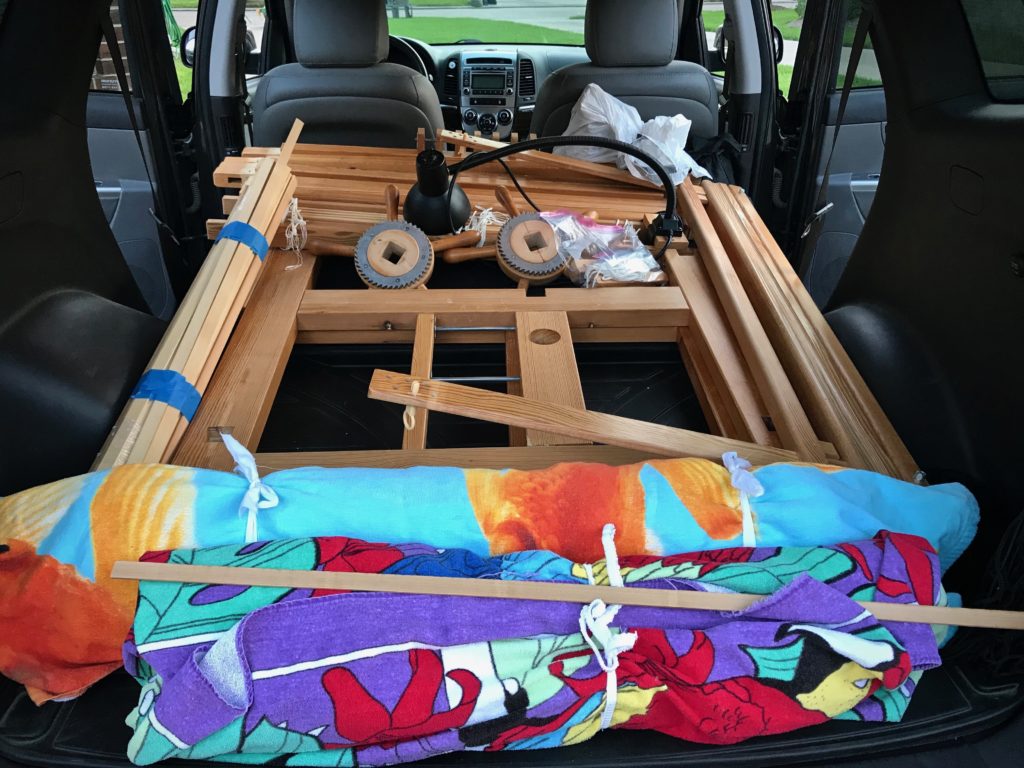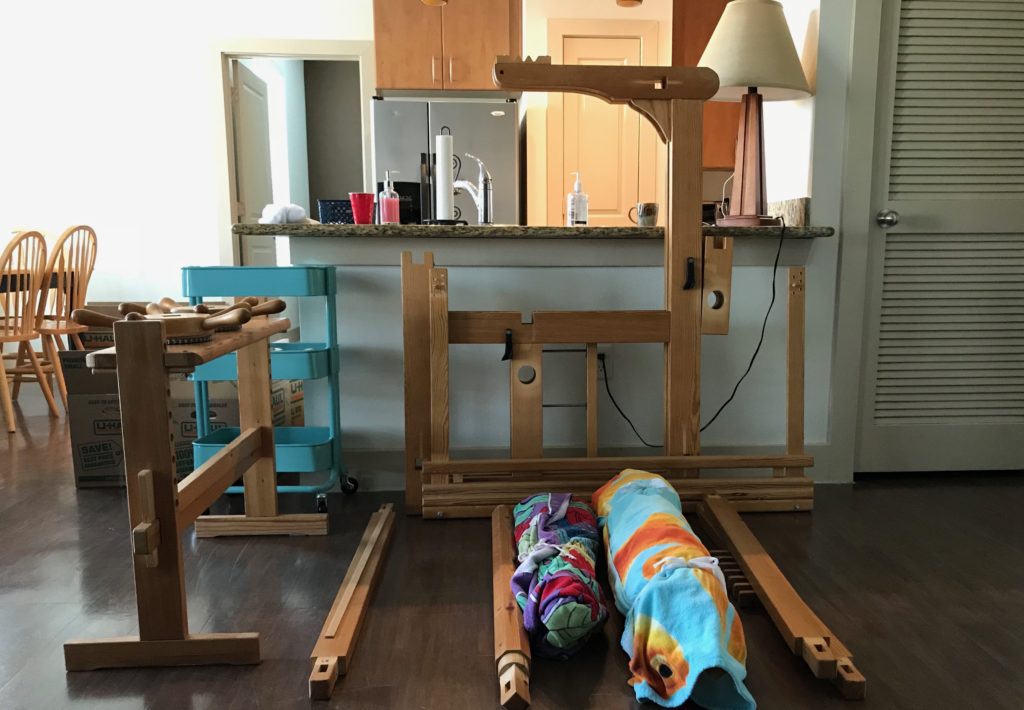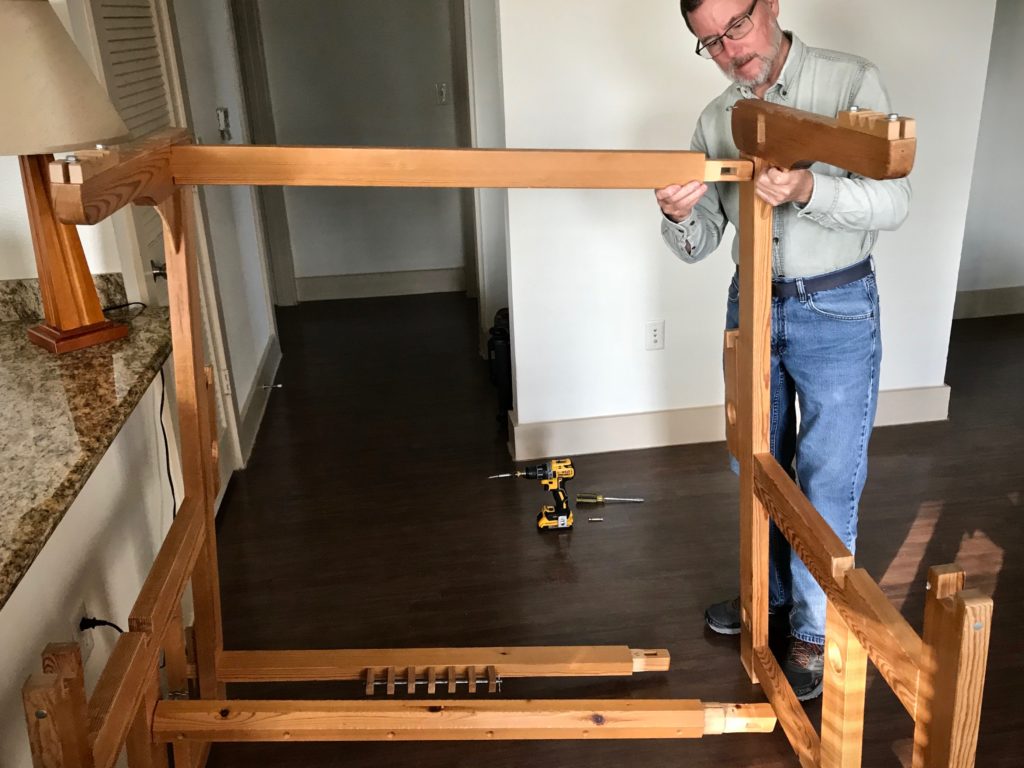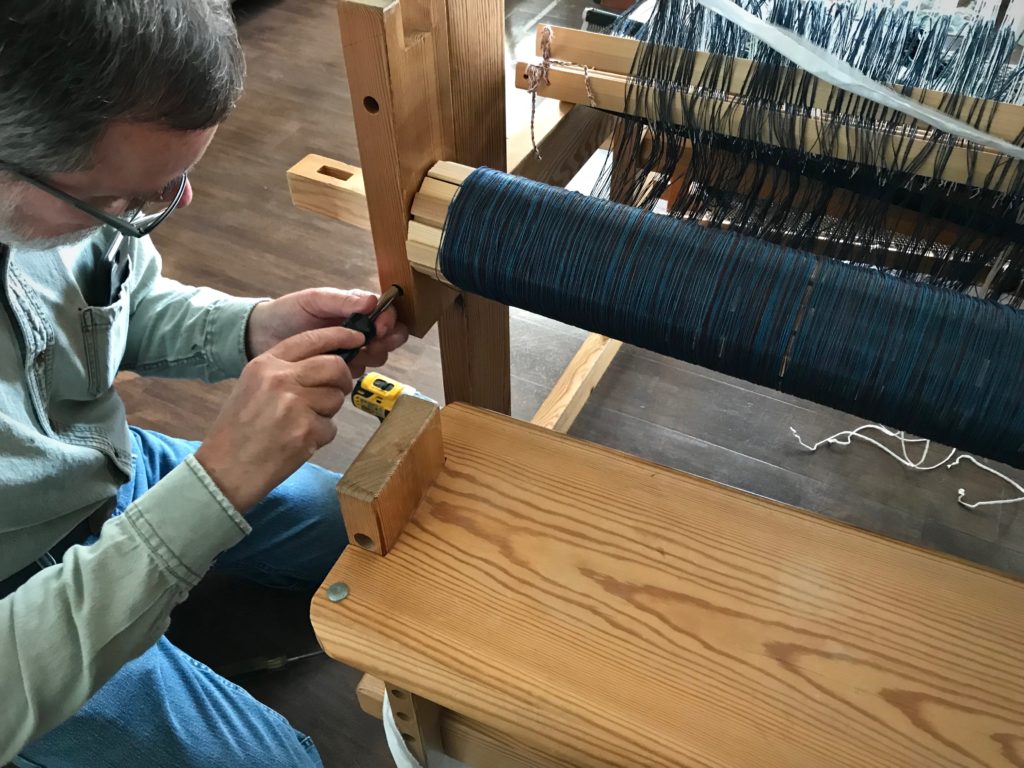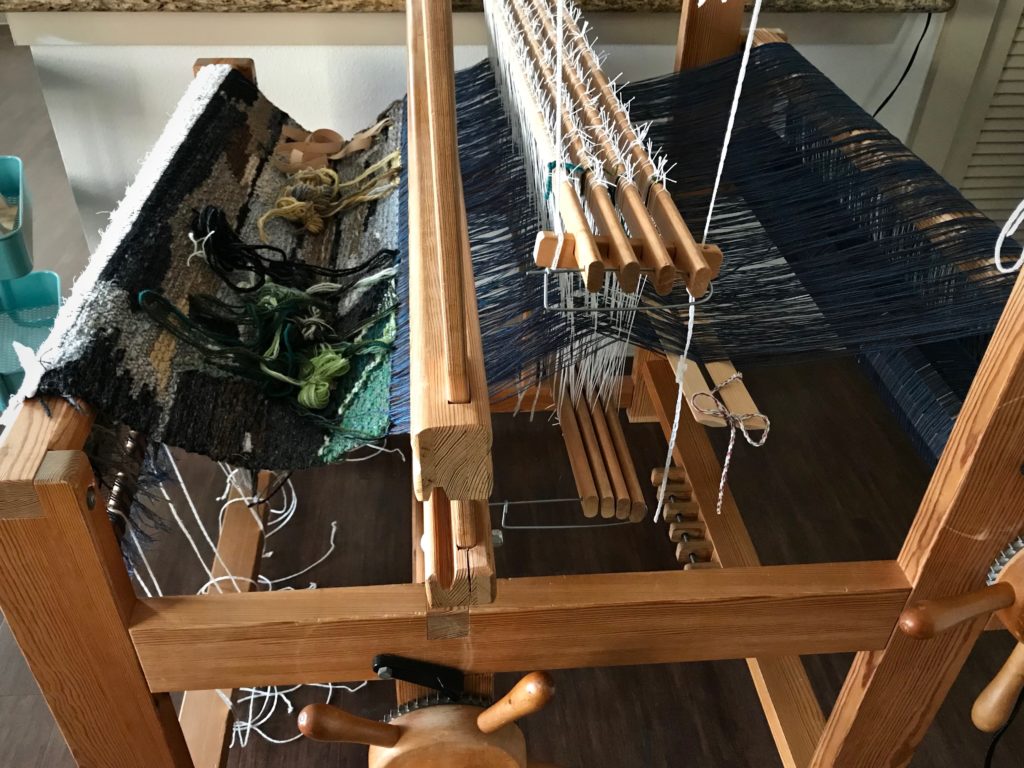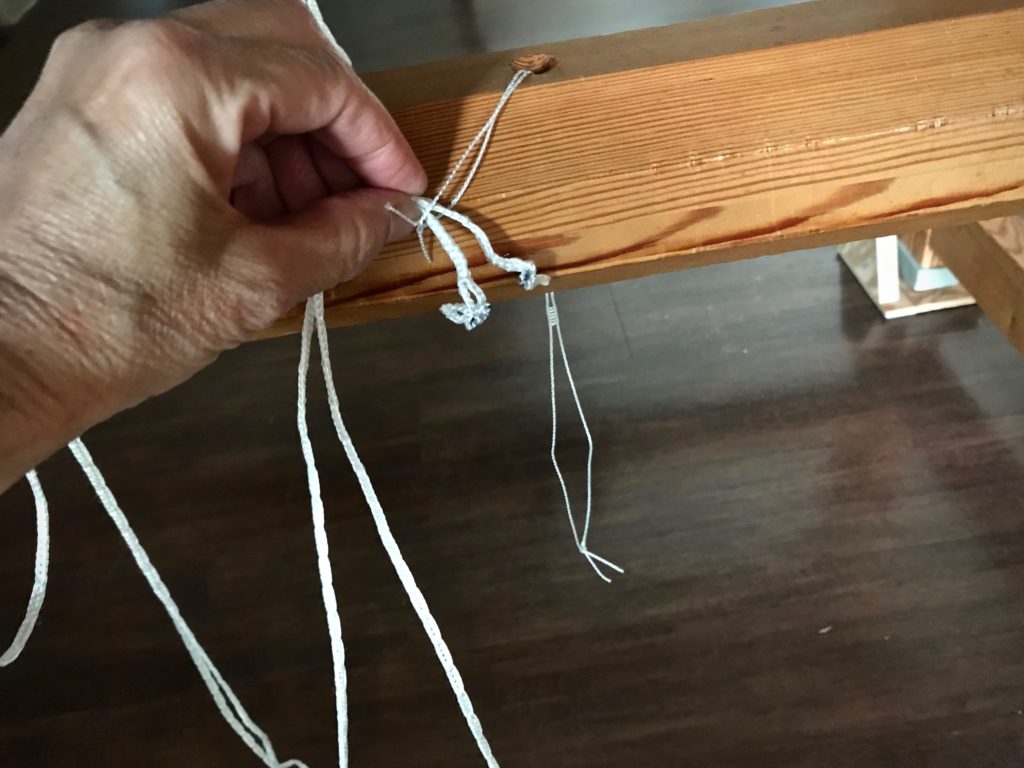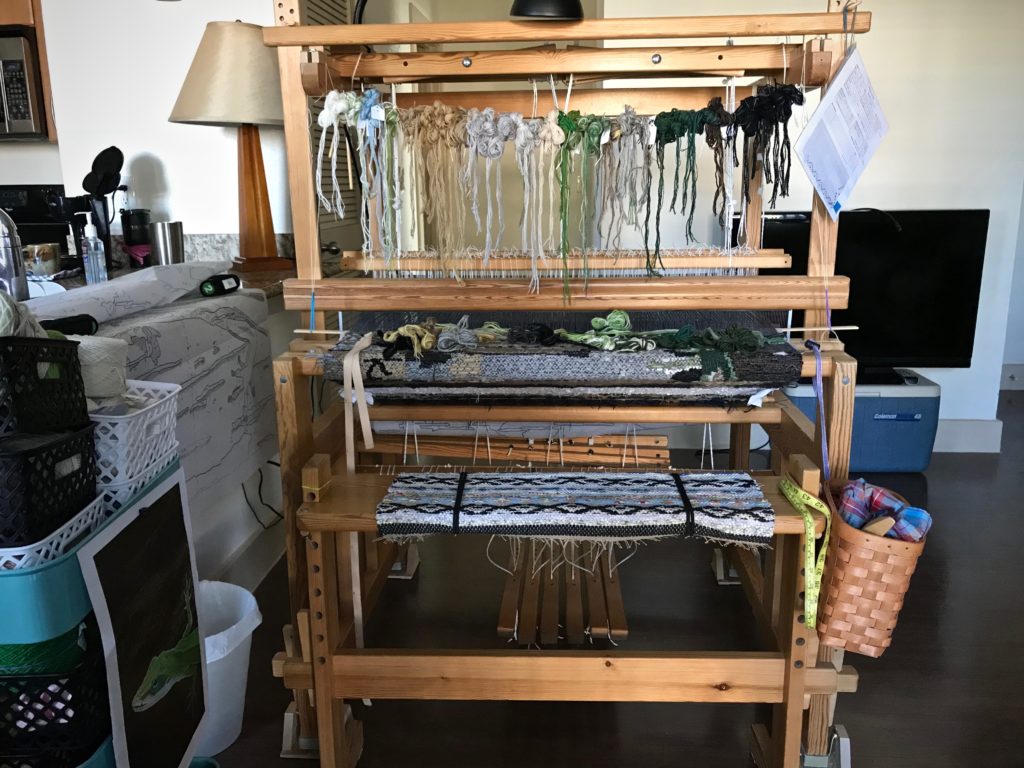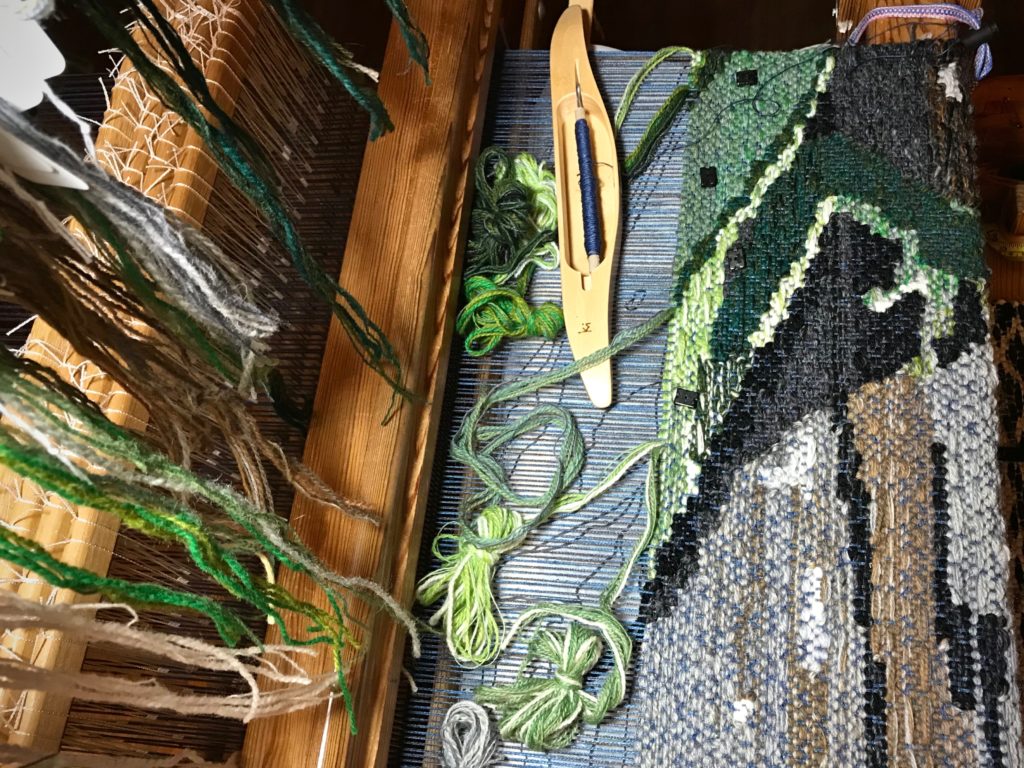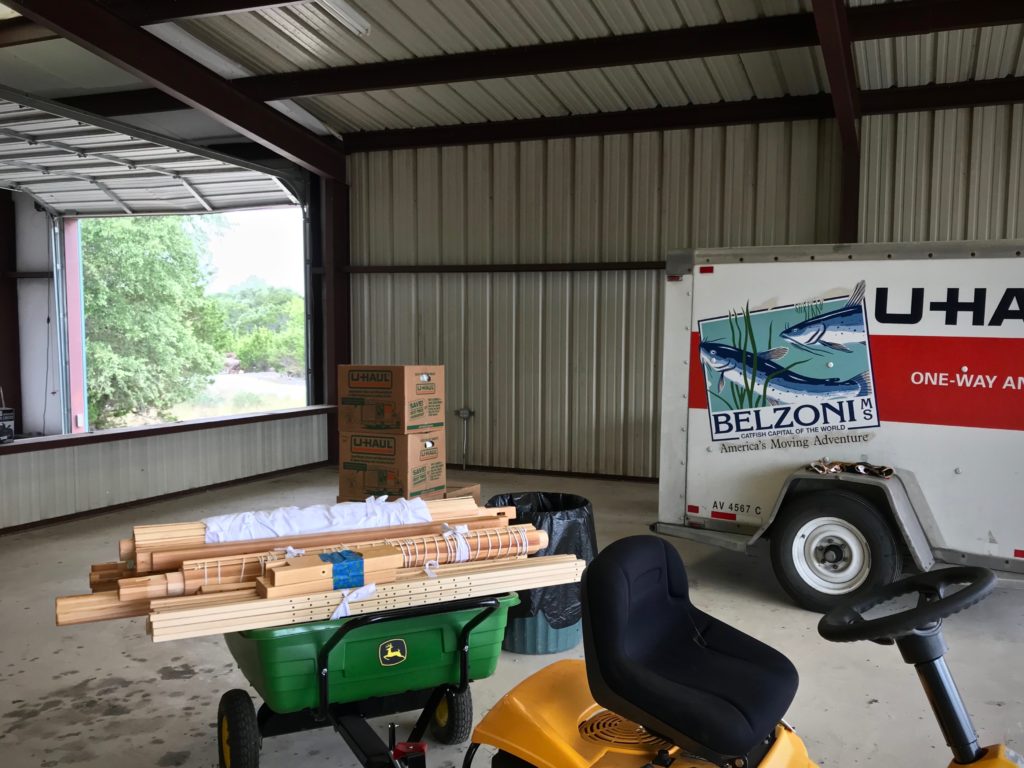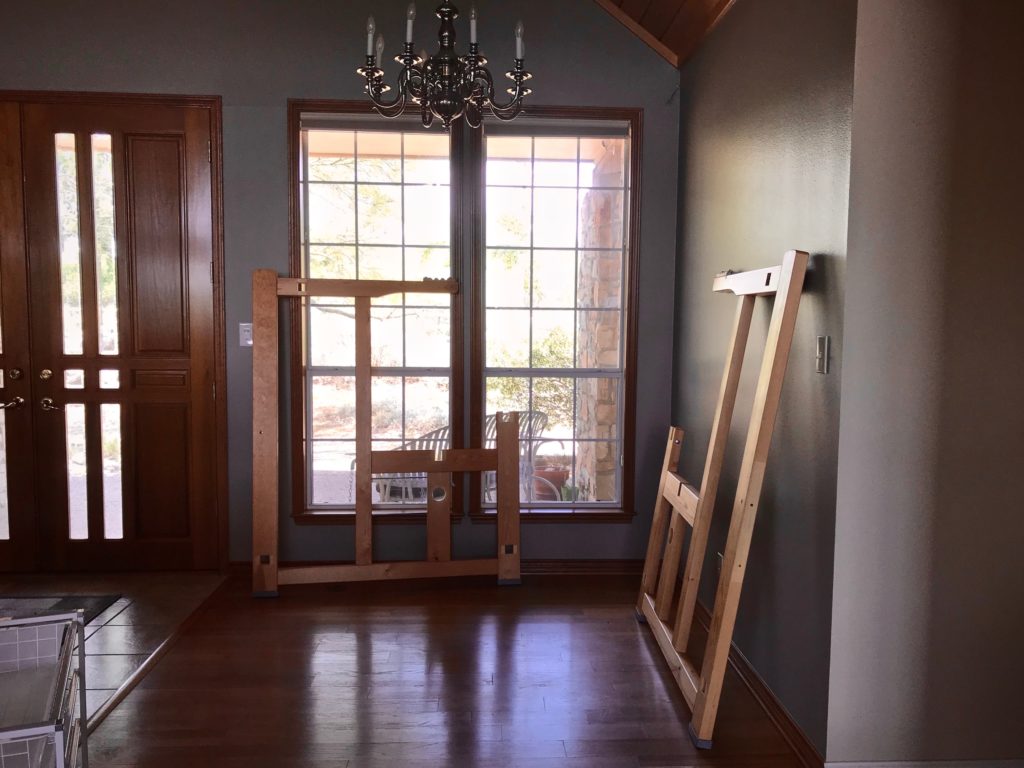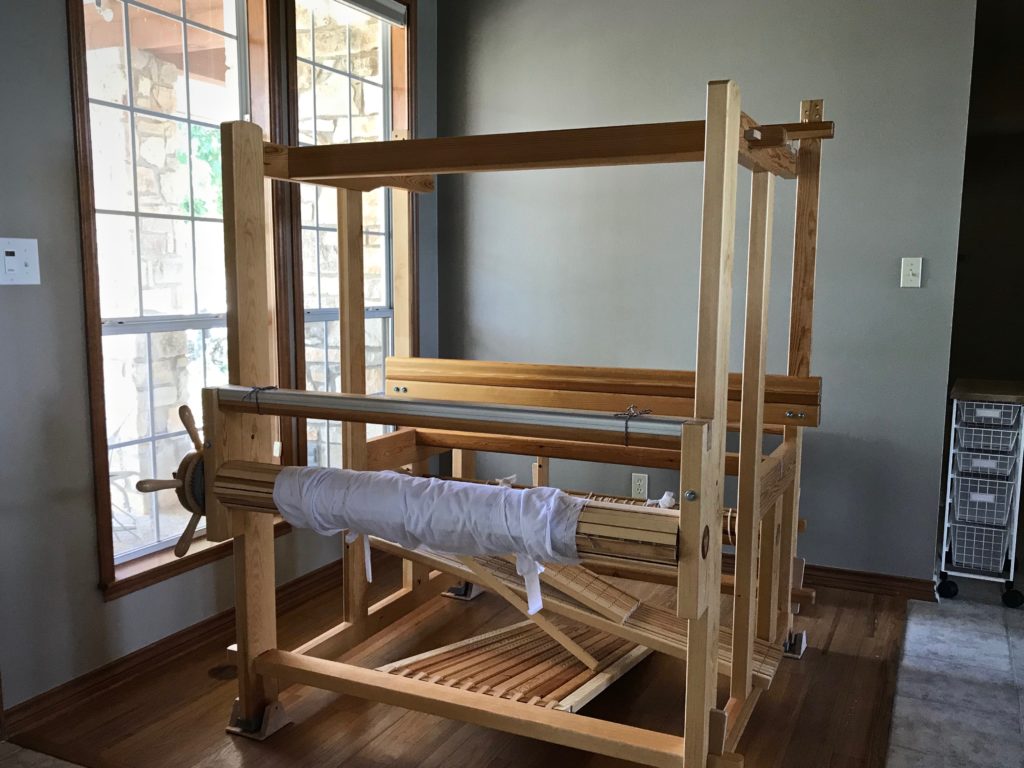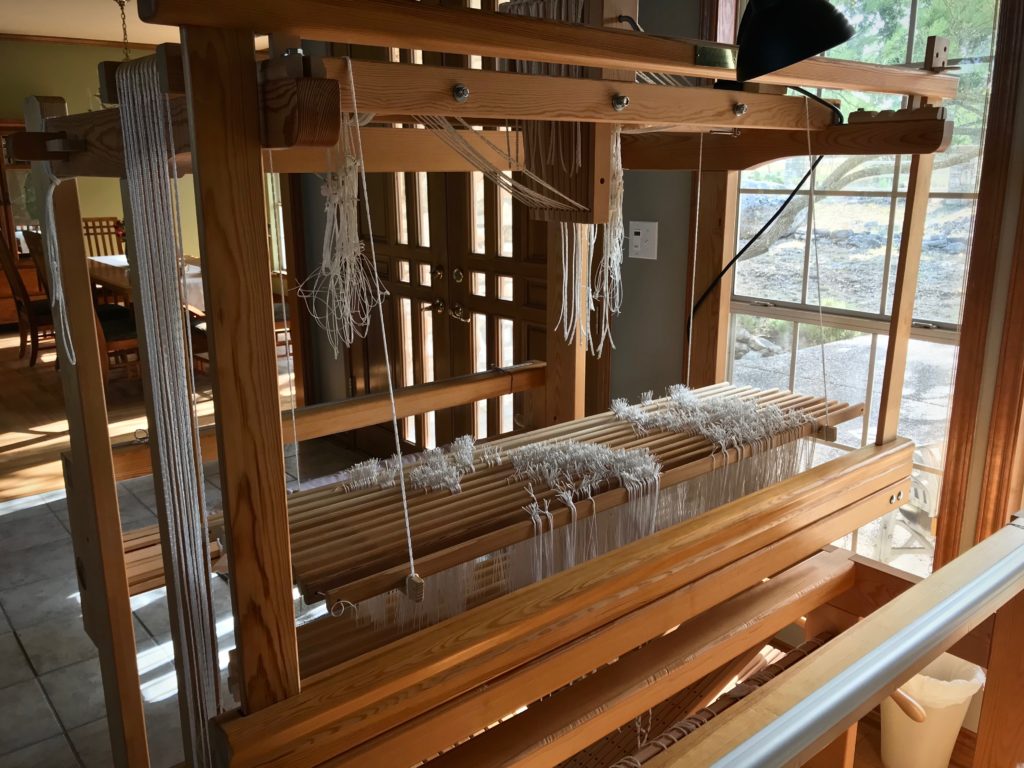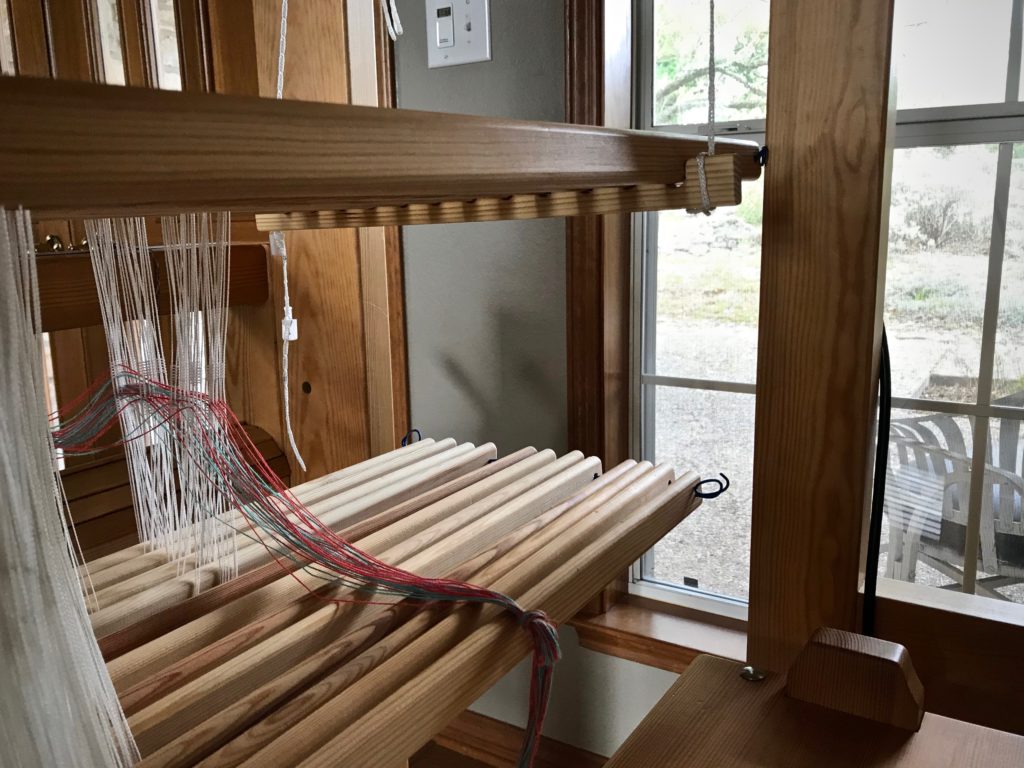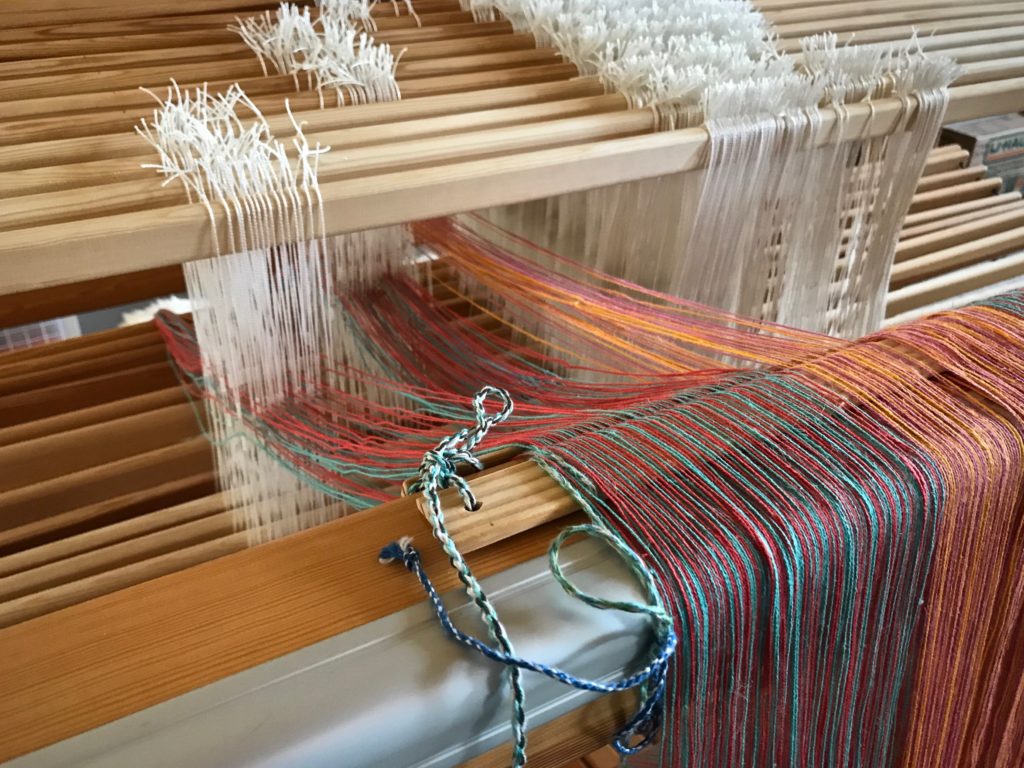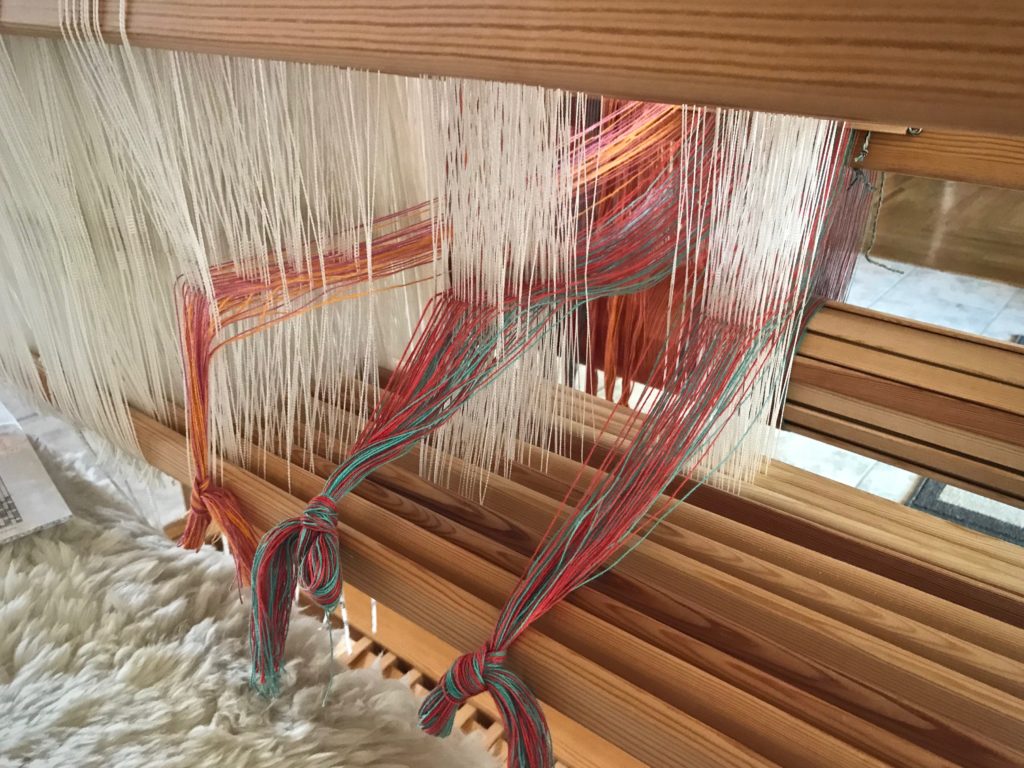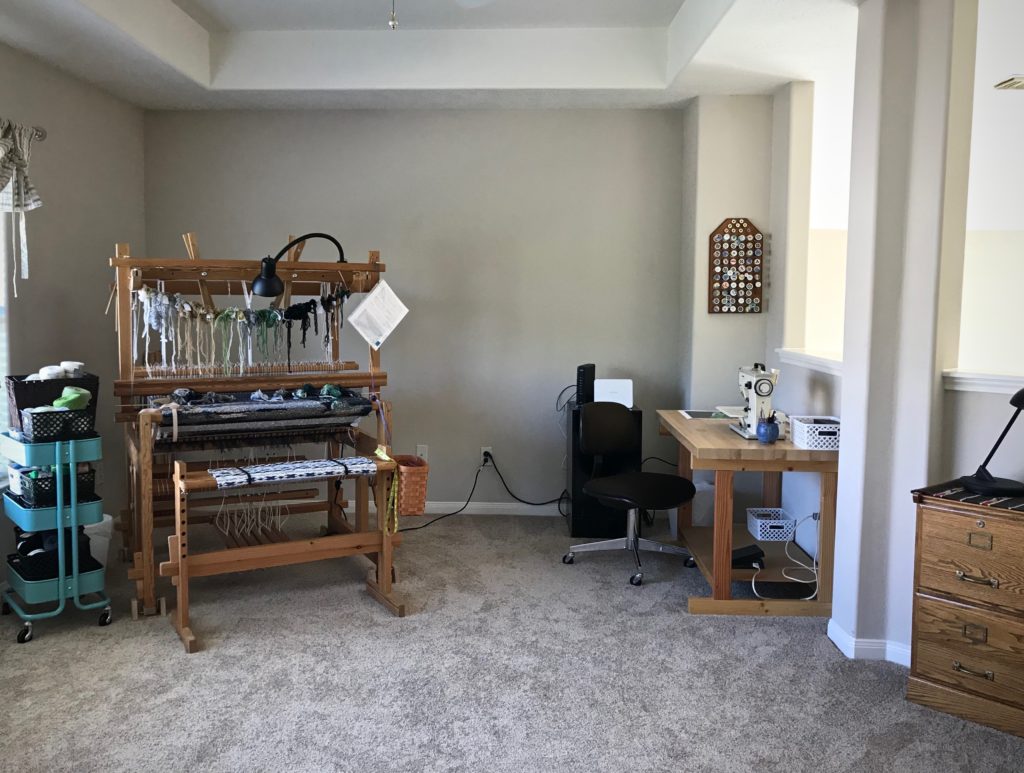It is not easy to see sleying errors in this fine-dent reed. I unknowingly quadrupled the ends in four of the dents, instead of the specified two ends per dent. When I check as I go, I find the errors while they are still easy to fix.
How to check and double-check for sleying errors:
- Tie ends into threading groups, using a loose slip knot. (I do this before threading the heddles.)
- Sley one threading group. (I sley right to left.)
- Visually check the sleyed group of ends for skipped dents and crowded dents.
- Do a Click Test. Use the hook end of the reed hook to count the dents by running the hook along the reed…click, click, click… Make sure the number of clicks matches the number of dents needed for that group of ends.
—This is how I caught my errors. When the dents came up short in the Click Test, I knew I had some crowded dents that I had failed to catch in the visual check. - Move ends and re-sley as needed.
- Sley each remaining group of ends, checking as you go, visually and with the reed-hook Click Test.
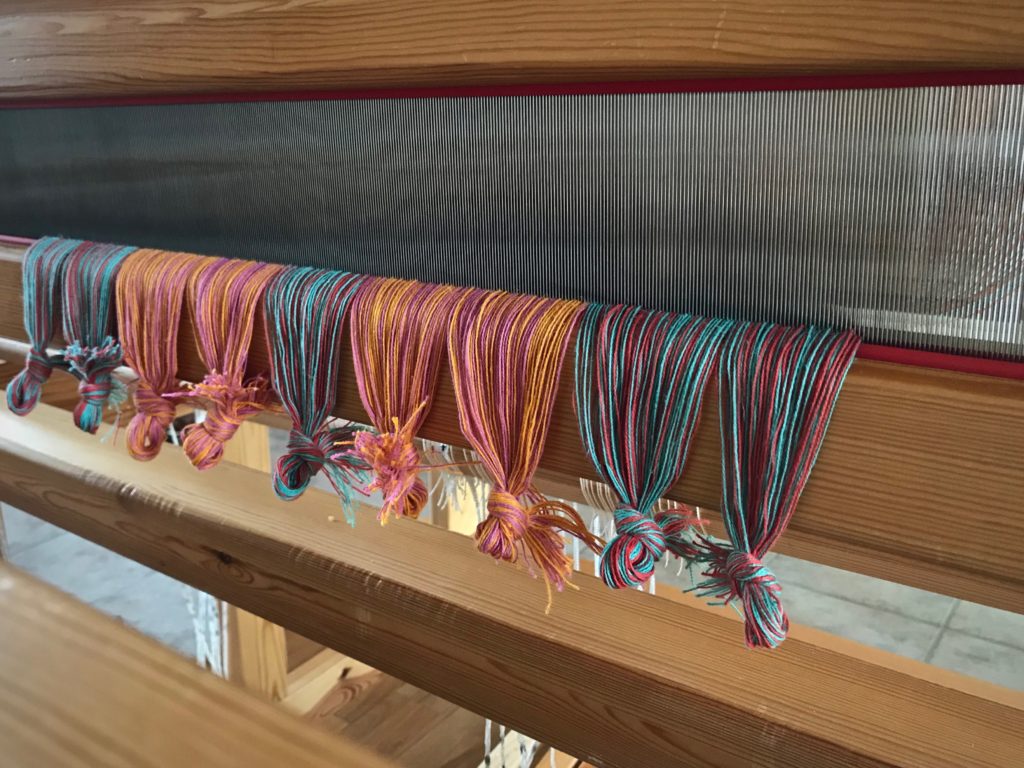
May your errors be few and fixable.
Happy sleying,
Karen

